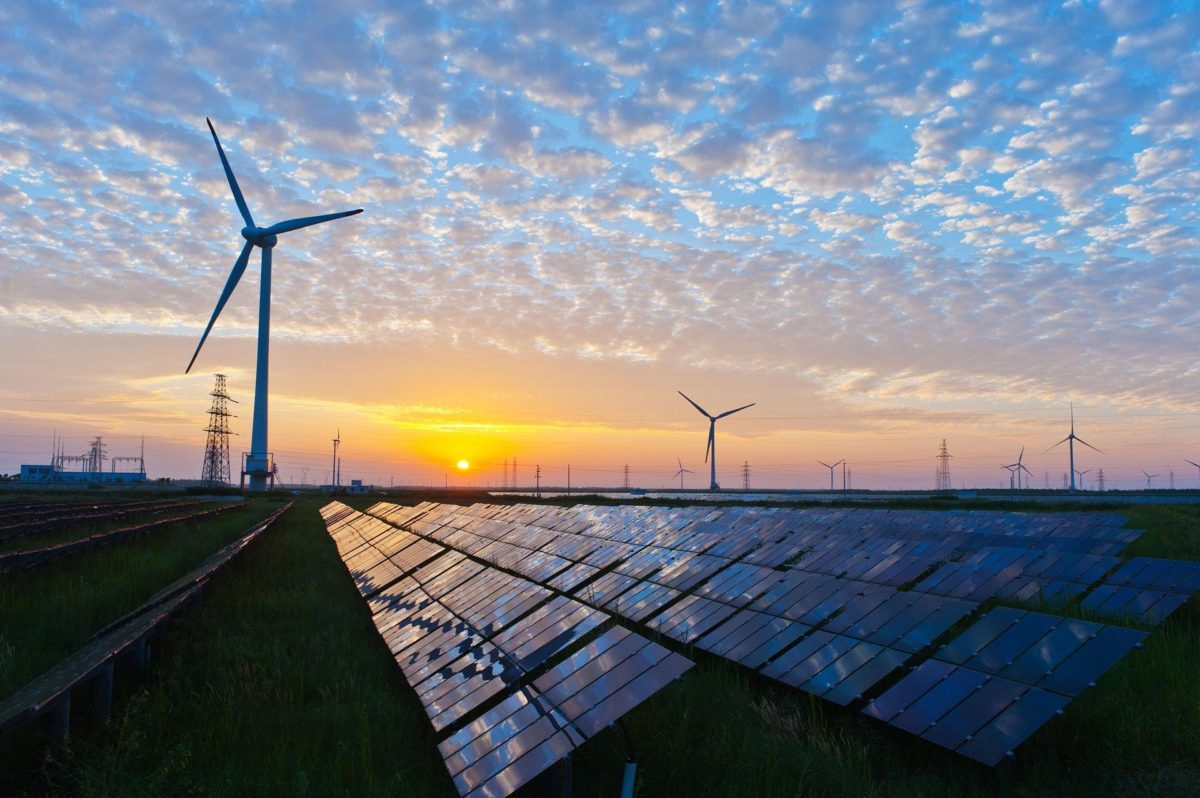A new white paper said that natural gas-fueled generation had the highest outage rate of all generation types during the mid-February winter storm that crippled much of the Electric Reliability Council of Texas (ERCOT) grid.
The paper said that wind generation over-performed compared with expectations and that solar recovered quickly after storm clouds passed. Solar did better than ERCOT models predicted and “contributed to helping keep more customers with power as the grid climbed out of its depths of load shedding.”
The white paper was prepared by Colorado-based grid analysis firm Vibrant Clean Energy.
The firm said that wind underperformed during a few periods over the course of the days-long storm, but that this underperformance “only lasted a few hours at a time.”
And, looking to the future, the paper said that in a hypothetical high-renewable ERCOT grid, wind and solar variability would still persist, but that adding 40,000 MW of storage would have met all of the February blackout requirements “with room to spare.”
Throwing shade
Covering California’s nearly 4,000-mile-long network of public water delivery canals with solar panels could be an economically feasible means of advancing both renewable energy and water conservation.
Researchers writing in the journal Nature Sustainability said that the solar panels would help prevent water loss through evaporation.
They said that pilot projects in India have shown the technical feasibility of several designs, but none have yet been deployed at scale. California’s canal network is among the world’s largest and the state faces both a drought-prone future and a rapid timeline to move to renewable energy. The researchers said that solar canals could address both challenges.
Canal-spanning solar panels are often supported by steel trusses or suspension cables. Both tend to be more expensive to build than support structures for ground-mounted solar panels. The researchers modeled costs in an effort to show how the benefits of solar canals outweighed the added costs for cable-supported installations. They said that cable-supported solar canals showed a 20-50% higher net present value, which they said indicated a higher financial return on investment.
Shade from solar panels also could help control the growth of aquatic weeds, a costly canal maintenance issue. And the study said that every megawatt of solar energy produced by solar canals in California’s Central Valley could replace 15-20 diesel-powered irrigation pumps.
Safari Energy’s 500th
Safari Energy said it has developed or acquired its 500th commercial-scale solar project. Its project are in 24 states and Washington, D.C., and have generated more than 618,000 MWh of electricity.
Founded in 2008, Safari Energy’s first project was a s3 kW solar system installed at Wesleyan University in Connecticut. In 2018, Safari Energy was acquired by utility PPL Corp. Since then Safari Energy has acquired more than 100 solar projects ranging from under 100 kW to over 20 MW.
The company’s 500th project, acquired recently, is a 2 MW solar system located at Chevron U.S.A. Inc.’s San Joaquin Valley Business Unit’s offices in Bakersfield, California.
Rio Tinto to test CSP
Energy technology company Heliogen and global mining firm Rio Tinto will explore deploying concentrated solar technology with thermal energy storage at a borates mine in California.
Heliogen will deploy its artificial intelligence (AI)-powered technology, which uses heat from the sun to generate and store energy to power the mine’s industrial processes.
At the California mine, the Heliogen technology will use AI to control mirrors that concentrate sunlight to capture energy used to make steam. The system will also store captured energy in the form of heat, allowing it to power nighttime operations.
Heliogen’s installation will generate up to 35,000 pounds per hour of steam to power operations, with the potential to reduce carbon emissions at the mine site by around 7%.
Structural battery breakthrough
Researchers from Chalmers University of Technology in Sweden said they produced a structural battery that performs 10 times better than previous versions. The battery contains carbon fiber that serves as an electrode, conductor, and load-bearing material. The research could pave the way for essentially “massless” energy storage in vehicles and other technology.
A structural battery works as both a power source and as part of the structure, for example, in a car body. Calculations show that this type of multifunctional battery could reduce the weight of an electric vehicle.
The battery has an energy density of 24 Wh/kg. The researchers said this means roughly 20% capacity compared to comparable lithium-ion batteries currently available. Because vehicle weight can be reduced, less energy is needed to move the vehicle. And the battery’s stiffness suggests it can compete with other materials commonly used in vehicle production.
This content is protected by copyright and may not be reused. If you want to cooperate with us and would like to reuse some of our content, please contact: editors@pv-magazine.com.









The grid operators in the SW part of the state did not have the circuits with NG compressor stations listed as critical and shut them down. No pressure, no gas. Unlike the hard carbon power generation, NG is kinda hard to store. In the Panhandle not only did we generally not lose power too badly but they kept the compressor stations operating, which, consequently, kept the large double-unit NG plant up and running.